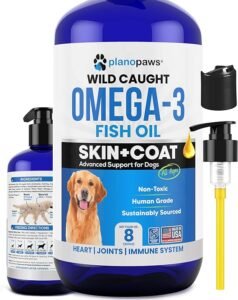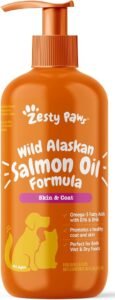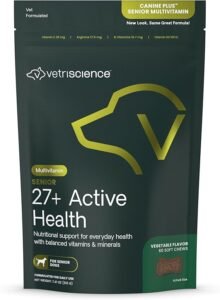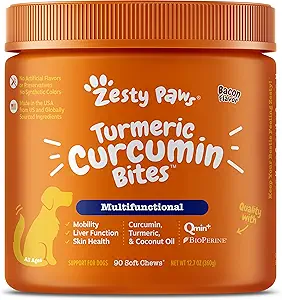Large Breeds
Samoyeds Hypoallergenic: Closer Look at the Breed

Are Samoyeds Hypoallergenic? A Complete Guide

Samoyeds Hypoallergenic, often recognized for their iconic fluffy white coat and friendly demeanor, are a popular dog breed. However, many potential owners wonder about their hypoallergenic status, especially if allergies are a concern. Here’s an in-depth exploration of Samoyeds, their coat characteristics, and their potential suitability for allergy sufferers.
For more information regarding 4 seasonal cxcercieses of all dog breeds recommended by the doctors and experts,you can visit our youtube channel:
History of Samoyeds Hypoallergenic

The Samoyed breed originated with the Samoyedic peoples of Siberia, who bred these dogs for herding reindeer and pulling sleds. These nomadic tribes relied on Samoyeds not only for work but also as companions, sharing their tents with them for warmth.
European explorers first encountered Samoyeds during expeditions to Siberia in the 19th century. They brought these dogs back to Europe, where breeders refined their distinctive features, such as their fluffy white coats and smiling expressions. By the early 20th century, Samoyeds gained popularity in England and America, establishing their presence in dog shows and as family pets.

In 1906, the American Kennel Club (AKC) officially recognized the Samoyed breed. Since then, the breed’s friendly and adaptable nature has made it a beloved pet worldwide. Its role expanded from herding and sledding to therapy work and even competitive dog sports, showcasing its versatility.
Understanding Hypoallergenic Dog Breeds
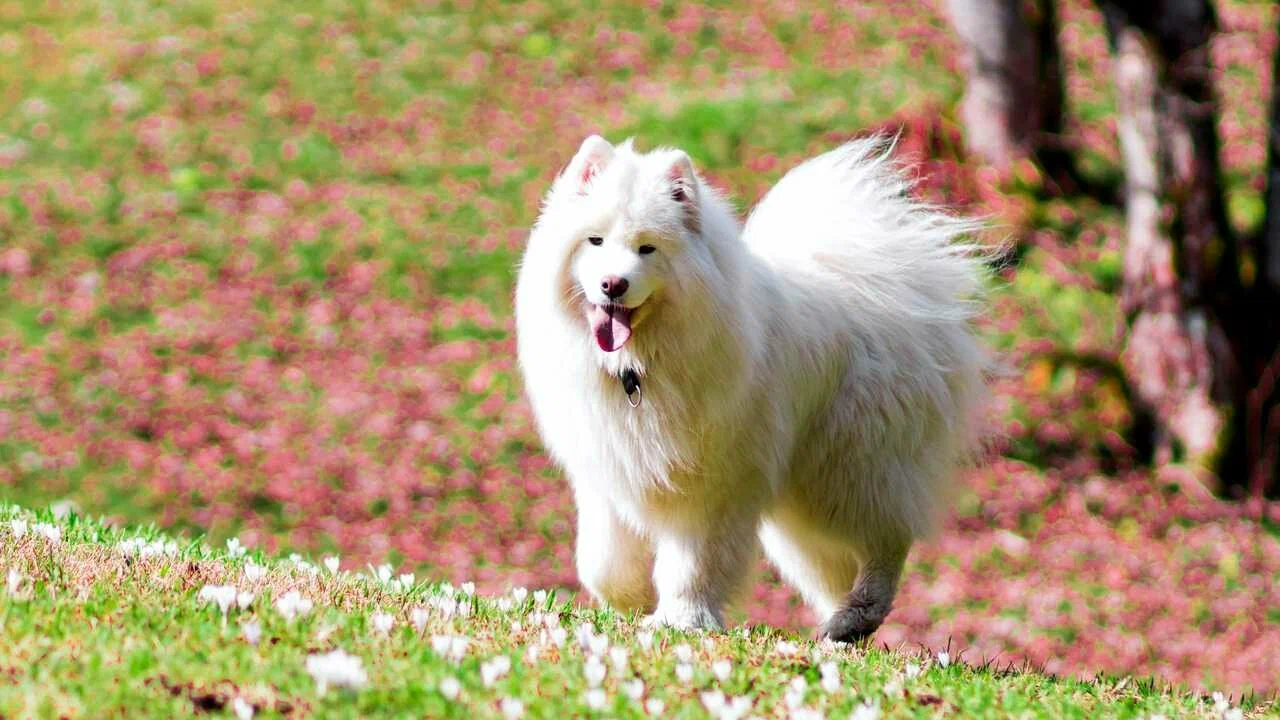
Hypoallergenic dogs are often described as breeds less likely to trigger allergic reactions in sensitive individuals. However, no dog is entirely hypoallergenic. Allergies to dogs stem from proteins in their saliva, dander, and urine, not just their fur. While some breeds produce fewer allergens, it depends on the individual and the breed.
Samoyed Coat Characteristics

- Samoyeds have a double-layered coat consisting of:
- Outer Coat: Long, coarse, and weather-resistant, ideal for cold climates.
- Undercoat: Soft and dense, providing insulation.
Their coat sheds heavily, especially during seasonal “blowouts,” where they lose most of their undercoat. This shedding can significantly increase the spread of dander, making them less ideal for allergy sufferers.
Are Samoyeds Hypoallergenic?
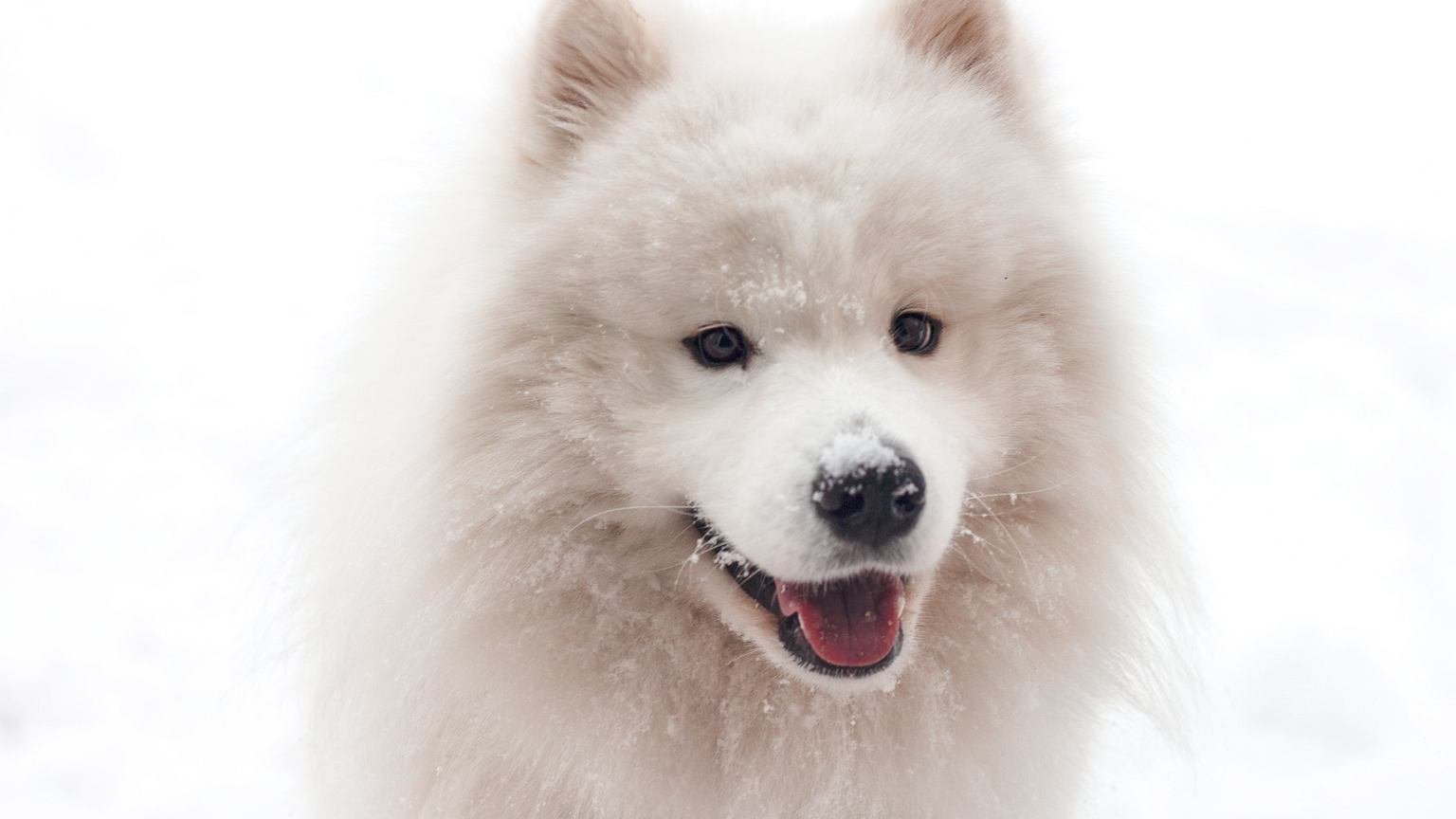
The short answer is no. Samoyeds are not considered hypoallergenic because:
- High Shedding: Their frequent shedding spreads allergens like dander.
- Saliva Allergens: Samoyeds are known for licking their fur, increasing allergen exposure.
- Grooming Needs: Their thick coat requires frequent brushing, which can release allergens into the environment.
Managing Allergies with a Samoyed

If you are an allergy sufferer determined to own a Samoyed, here are some tips:
- Regular Grooming: Frequent brushing (preferably outdoors) can reduce loose fur and dander.
- Air Purifiers: Use HEPA filters to minimize airborne allergens.
- Frequent Cleaning: Vacuum carpets and wash bedding regularly to reduce allergen buildup
- Limit Access: Restrict the dog’s access to certain areas, such as bedrooms.
- Allergy Medications: Consult with a doctor about allergy treatments.
Genetic Table of Samoyeds with Description

| Genetic Attribute | Details |
|---|---|
| Breed Origin | Derived from the Samoyede people of Siberia, used for herding reindeer and sled pulling. |
| Coat Genetics | Double coat evolved for extreme cold, providing insulation and water resistance. |
| Color Genes | White coat is dominant, with genes for cream or biscuit shading. |
| Health Predispositions | Genetic susceptibility to hip dysplasia and glomerulopathy (kidney disease). |
| Temperament Inheritance | Sociable and friendly nature, likely inherited from centuries of human companionship. |
Description: Samoyeds’ genetics showcase their adaptation to cold climates and their historical role in human society. Their double coat is a direct result of surviving harsh Siberian winters, and their friendly demeanor reflects generations of close human interaction.
Life Span Table with Description

| Life Expectancy Factor | Details |
|---|---|
| Average Life Span | 12–14 years |
| Dietary Impact | Balanced diets rich in protein extend life span. |
| Exercise Influence | Regular physical activity reduces obesity-related risks. |
| Preventive Care | Early health screenings for genetic disorders prolong life. |
Description: Samoyeds typically live between 12 to 14 years, with their lifespan significantly influenced by their lifestyle and healthcare. Proper nutrition, regular exercise, and early veterinary care are essential to ensure they remain healthy throughout their life.
Biological Characteristics Table with Description

| Attribute | Details |
|---|---|
| Height | Males: 21–23.5 inches; Females: 19–21 inches |
| Weight | Males: 45–65 lbs; Females: 35–50 lbs |
| Coat Type | Double-layered, dense, and fluffy |
| Activity Level | High, requiring daily physical and mental stimulation. |
| Dietary Needs | Requires a diet high in protein and healthy fats to maintain energy. |
Description: Samoyeds are medium to large-sized dogs with a striking double coat that serves as insulation in cold weather. Their physical needs demand active owners who can provide sufficient exercise and a nutritious diet.
Latest Research

Study on Cold Adaptation: A 2023 study published in Canine Genetics Journal examined the genes responsible for Samoyeds’ double coat, identifying pathways that regulate insulation. This research provides insights for breeds adapting to warmer climates.

Health Research: Recent advancements in genetic screening have improved early detection of Samoyed hereditary glomerulopathy, reducing its prevalence through selective breeding.

Behavioral Studies: A 2022 analysis from Dog Behavioral Science highlighted the breed’s exceptional sociability, linking it to genetic markers associated with temperament and human bonding.

Climate Adaptability: Ongoing research investigates how to maintain Samoyeds’ well-being in urban environments, focusing on hydration and coat care in warmer regions.
FAQs about Samoyeds and Hypoallergenic Traits

Are Samoyeds Hypoallergenic?
No, Samoyeds are not considered hypoallergenic. While they produce less dander than some breeds and have a clean coat that minimizes odor, they still shed heavily, which can trigger allergies.
How Do Samoyeds Trigger Allergies?
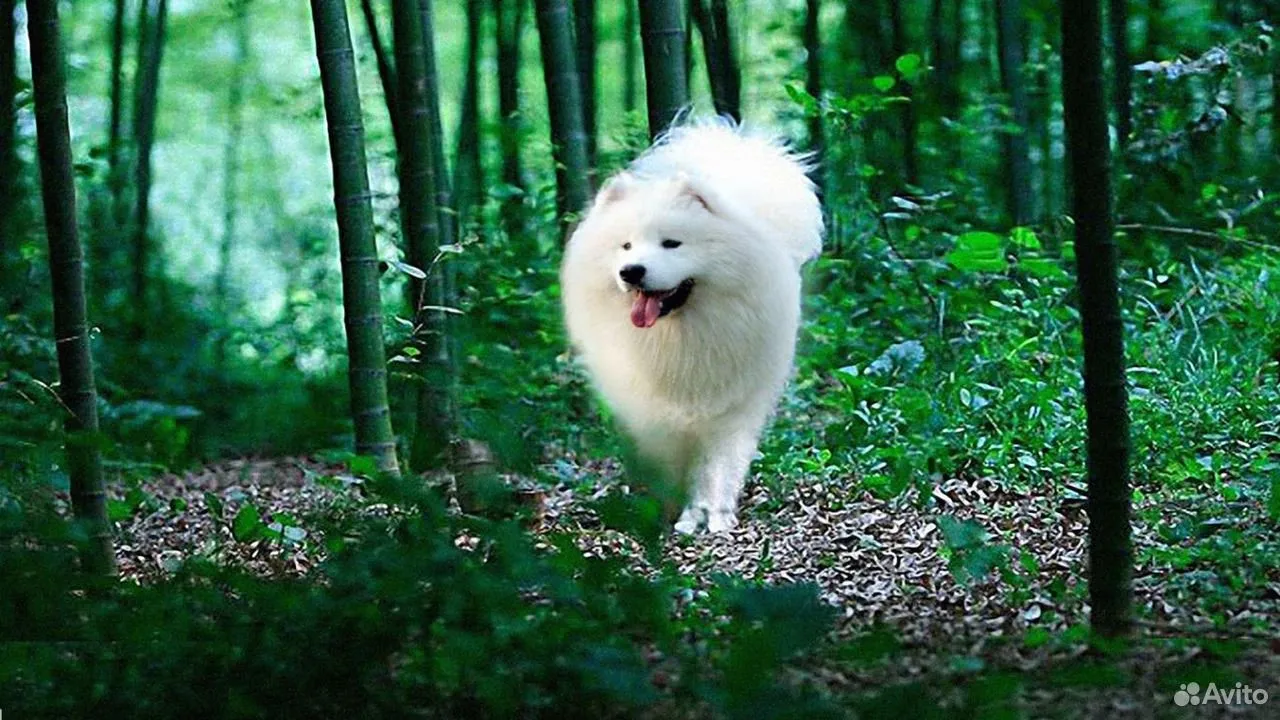
Allergies are primarily caused by proteins found in a dog’s saliva, skin cells, and urine. Despite their less odorous coat, Samoyeds’ frequent shedding disperses allergens, making them unsuitable for people with severe allergies.
Can a Samoyed’s Coat Be Managed for Allergy Sufferers?

Regular grooming and bathing can reduce the amount of dander and shedding. Investing in air purifiers and allergen-resistant bedding can also help manage allergens in the environment.
What Grooming Does a Samoyed Require?
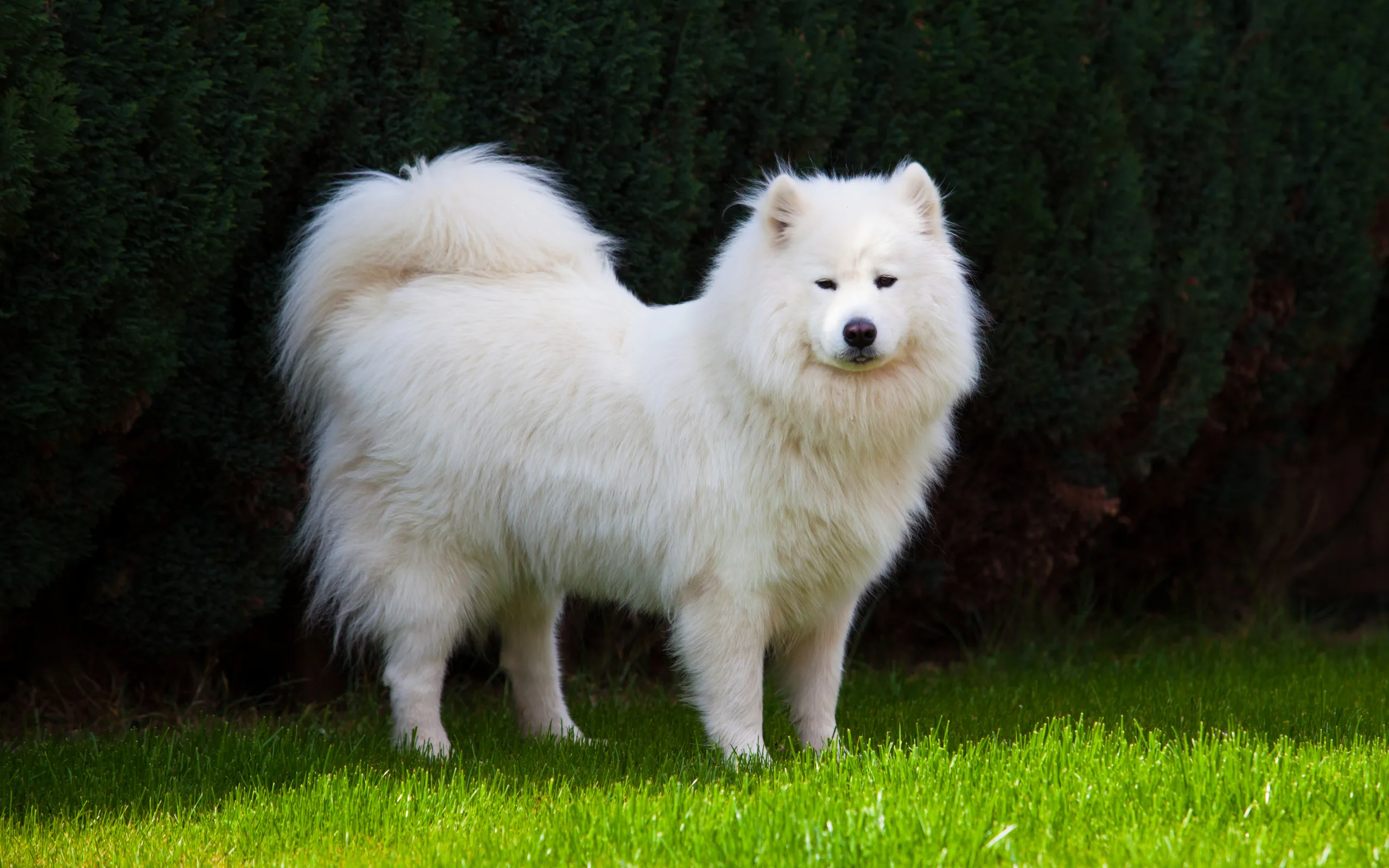
Samoyeds require brushing several times a week to manage their thick double coat. During shedding seasons (spring and fall), daily grooming is recommended to minimize loose fur.
Do Samoyeds Shed Year-Round?
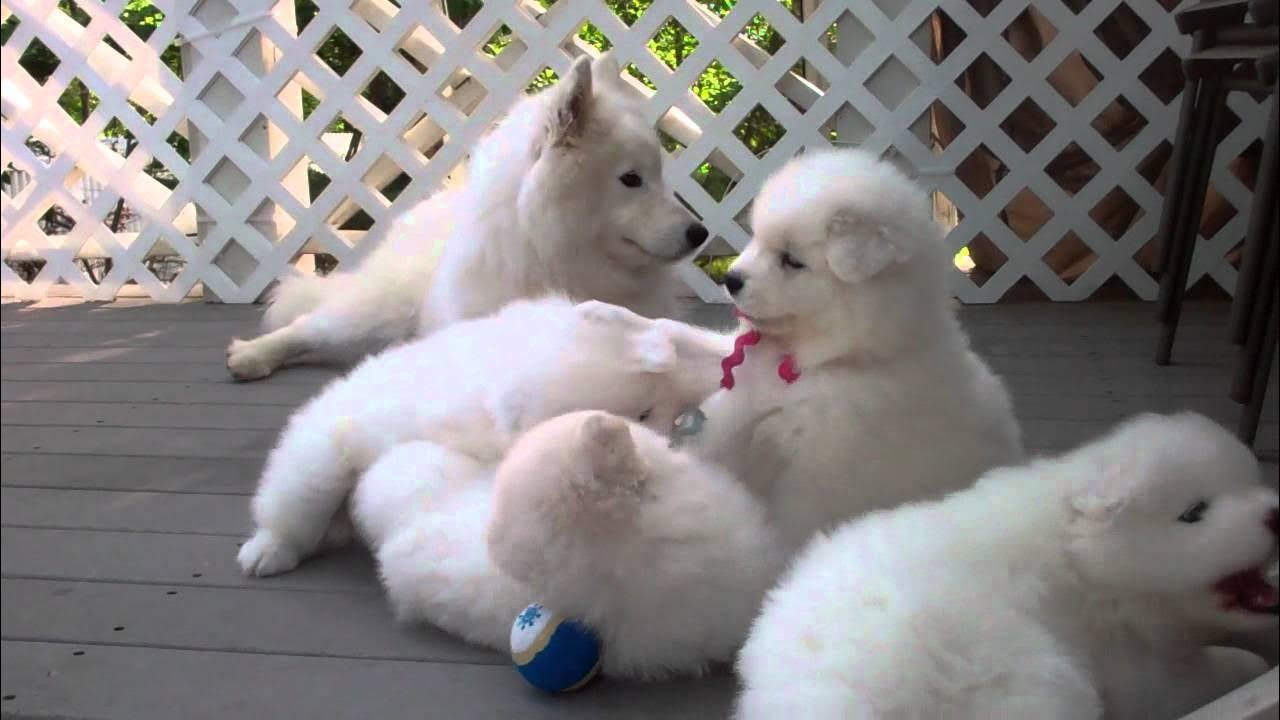
Yes, Samoyeds shed moderately year-round, with heavy shedding (blowing coat) occurring twice a year.
Are Samoyeds Suitable for Families with Children?

Yes, Samoyeds are known for their friendly and gentle temperament, making them excellent companions for children. However, their playful energy means supervision is recommended with very young children.
What Are the Exercise Needs of a Samoyed?
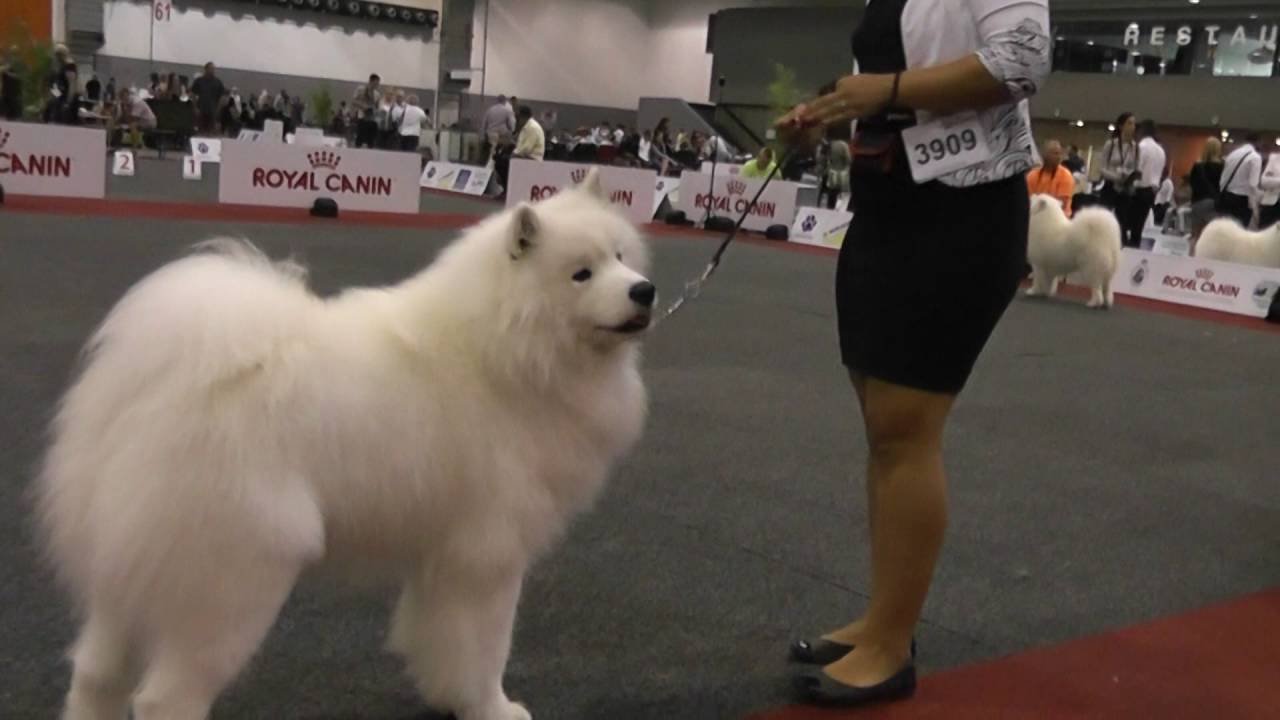
Samoyeds are active dogs that require at least 1–2 hours of exercise daily, including walks, play, and mental stimulation through training or puzzle games.
What Are Common Health Concerns in Samoyeds?

- Hip Dysplasia: A genetic condition affecting mobility.
- Progressive Retinal Atrophy (PRA): Leads to vision loss over time.
- Samoyed Hereditary Glomerulopathy: A kidney disease common in the breed.
- Obesity: Resulting from overfeeding and insufficient exercise.
How Can I Ensure My Samoyed Stays Healthy?
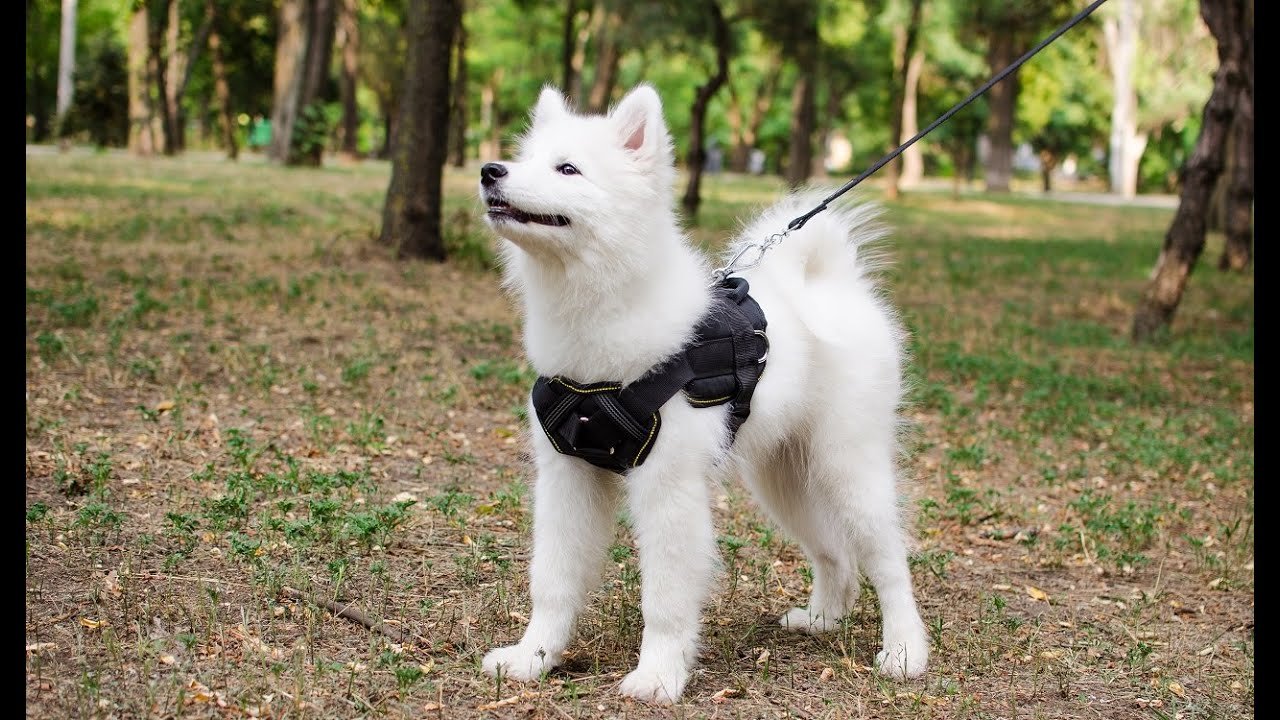
Regular vet check-ups, a balanced diet, and consistent exercise are key. Genetic screenings before adoption can help avoid potential health issues.
What Is the Average Lifespan of a Samoyed?

Samoyeds typically live 12–14 years with proper care and a healthy lifestyle.
Are Samoyeds Adaptable to Warmer Climates?
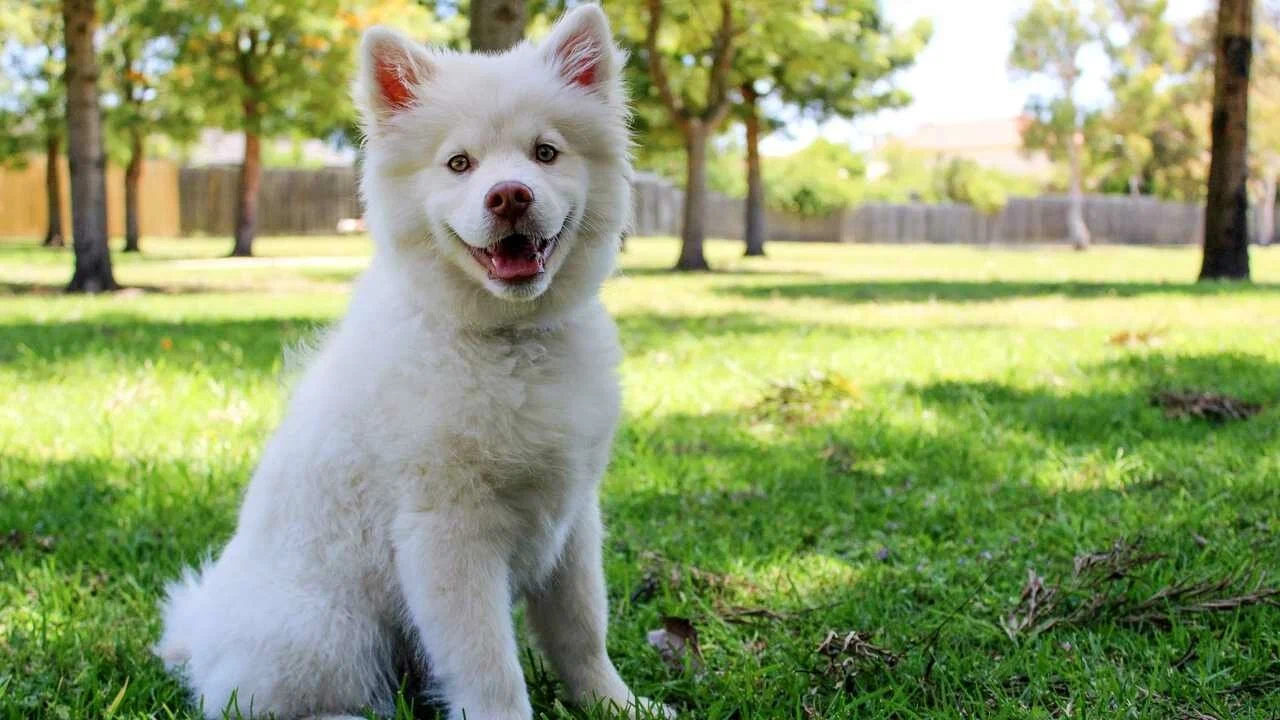
While Samoyeds are bred for cold weather, they can adapt to warmer climates with proper care, including providing shade, water, and avoiding outdoor activities during peak heat.
Are Samoyeds Good for First-Time Owners?
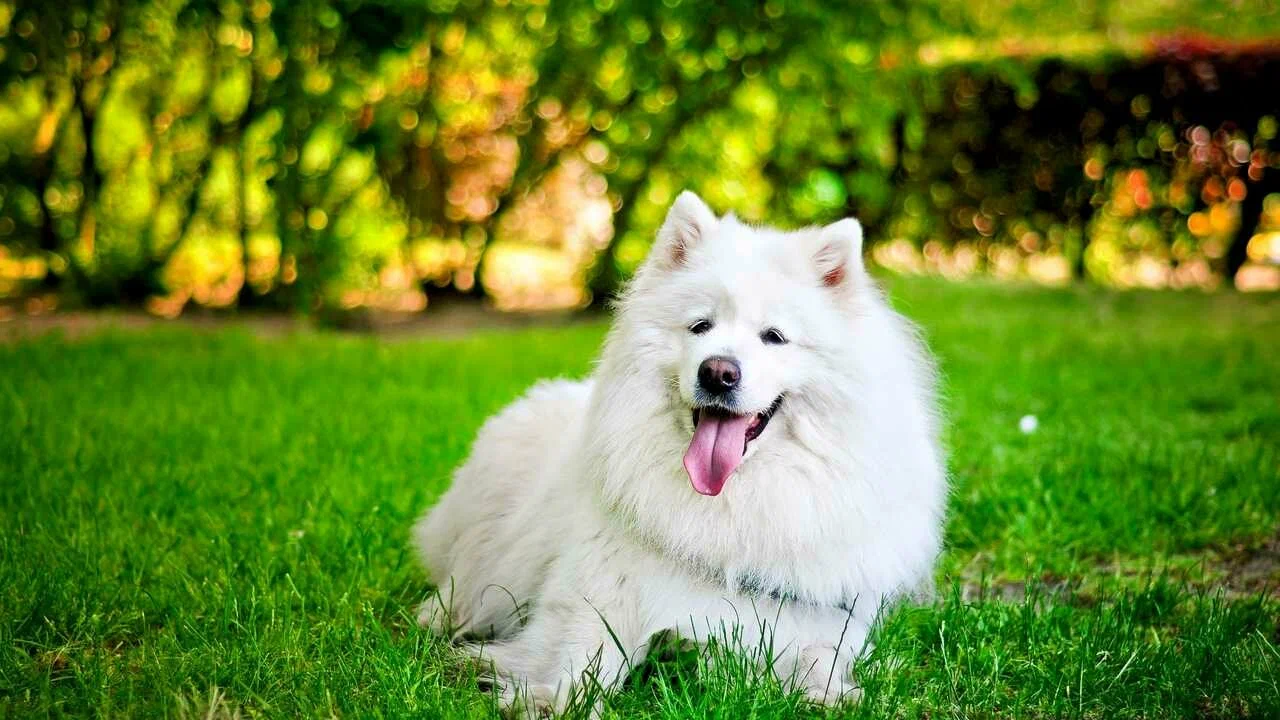
Yes, but their grooming needs and exercise requirements can be demanding. First-time owners should be prepared for a high-energy and sociable dog that thrives on attention and activity.
What Kind of Food Should Samoyeds Eat?
A high-quality diet rich in protein, healthy fats, and essential nutrients is necessary to maintain their energy levels and coat health.
Can Samoyeds Live in Apartments?

Yes, but only if their exercise needs are met. Regular outdoor activities and mental stimulation are essential to prevent boredom and destructive behavior.
Do Samoyeds Bark a Lot?

Samoyeds are vocal dogs known for their “talkative” nature. They may bark to communicate, alert, or out of boredom.
How Often Should Samoyeds Visit the Vet?
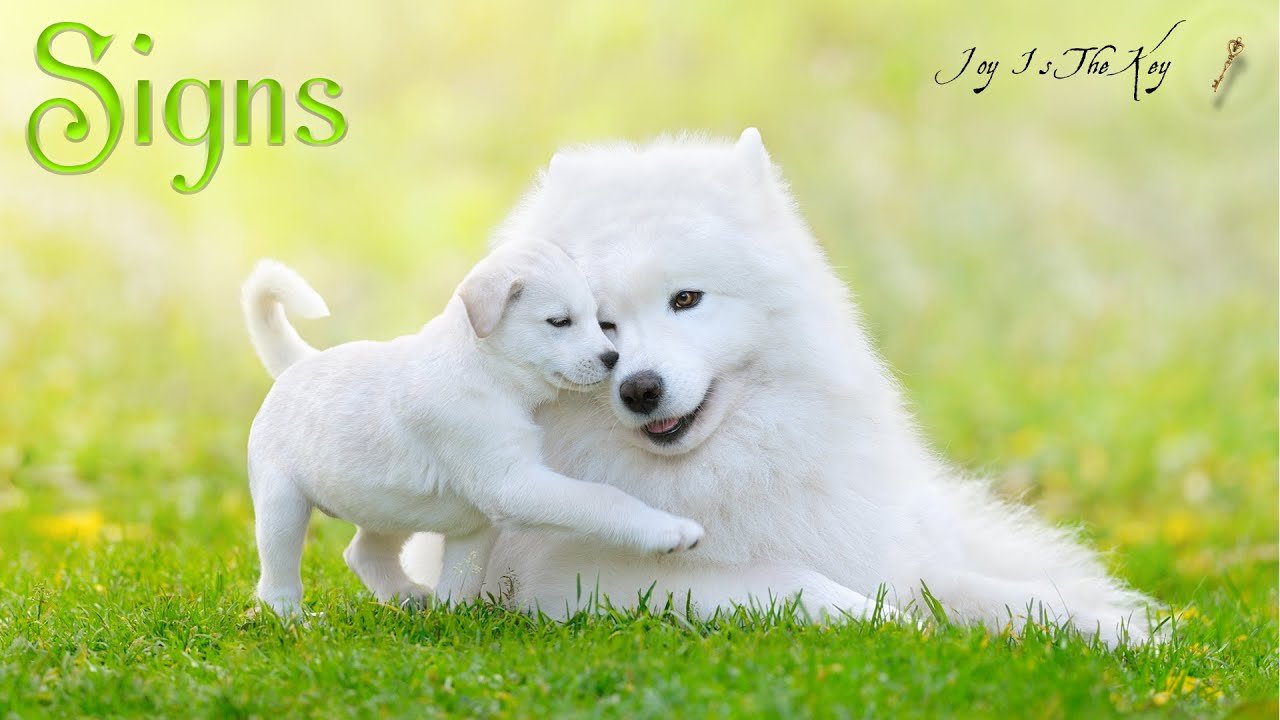
Routine check-ups every 6–12 months are recommended, with additional visits for vaccinations, dental cleanings, and health screenings.
Large Breeds
The Dangerous Effects of Loneliness: on Your Dog’s Heart Health

Introduction

The Dangerous Effects of Loneliness: Dogs are social animals that thrive on companionship and interaction. However, in today’s fast-paced world, many dogs spend long hours alone, leading to a hidden health crisis—loneliness and its impact on heart health. Understanding these risks and taking proactive measures can protect your furry friend from developing serious cardiovascular issues.
How Loneliness Affects a Dog’s Heart

Loneliness is more than just an emotional state; it has physiological consequences that can harm a dog’s heart over time.
1. Increased Stress and Anxiety
When a dog is left alone for extended periods, it experiences heightened levels of cortisol (the stress hormone). Chronic stress contributes to high blood pressure, which puts strain on the heart, increasing the risk of heart disease.
2. Irregular Heart Rate
Dogs experiencing prolonged loneliness often show signs of an irregular heartbeat (arrhythmia). This condition occurs when the heart struggles to maintain a normal rhythm due to prolonged stress and anxiety.
3. Obesity and Poor Cardiovascular Health
Lonely dogs are less active, which can lead to weight gain and obesity. Excess weight places additional strain on the heart, increasing the likelihood of cardiovascular diseases such as hypertension and congestive heart failure.
4. Weakened Immune System
Chronic loneliness weakens the immune system, making dogs more prone to infections. A compromised immune system can indirectly contribute to inflammation in the arteries, which negatively affects heart health.
Which Dogs Are Most at Risk?

Some dogs are more susceptible to the negative effects of loneliness than others.
| Dog Category | Risk Level |
|---|---|
| Puppies | 85% – Highly vulnerable due to early emotional development |
| Adult Dogs | 60% – Moderate risk, depending on breed and temperament |
| Senior Dogs | 75% – Increased risk due to aging and weakened cardiovascular system |
Certain breeds that require constant social interaction, such as Golden Retrievers, Labrador Retrievers, and German Shepherds, are more prone to loneliness-related heart issues.
Signs That Your Dog is Suffering from Loneliness

Detecting loneliness early can help prevent serious health problems. Common signs include:
- Excessive barking or howling when left alone
- Pacing or restlessness
- Destructive behavior (chewing furniture, scratching doors)
- Loss of appetite
- Lethargy or disinterest in playtime
- Clinginess when you are home
If your dog exhibits these behaviors, it’s essential to take action before heart-related complications develop.
How to Prevent Loneliness and Protect Your Dog’s Heart

Ensuring your dog feels secure and engaged can significantly reduce loneliness-related health risks. Here’s how:
1. Increase Social Interaction
- Spend at least 30-60 minutes a day engaging with your dog through play and training.
- Arrange playdates with other friendly dogs to keep them socially active.
- Take your dog to dog parks where they can interact with other pets and people.
2. Provide Mental Stimulation
- Use interactive puzzle toys to keep your dog mentally engaged while alone.
- Rotate their toys regularly to maintain interest.
- Play calming music or use pet-friendly TV programs to create a soothing atmosphere.
3. Establish a Routine
- Dogs thrive on consistency. A set feeding, walking, and play schedule reduces anxiety.
- Leave a piece of clothing with your scent to comfort your dog when you’re away.
4. Consider a Companion Pet
- If feasible, adopting a second pet can provide companionship for a lonely dog.
- Ensure both pets have compatible temperaments before introducing them.
5. Hire a Dog Walker or Pet Sitter
- If you work long hours, hiring a professional dog walker can provide essential midday exercise and interaction.
- A pet sitter or dog daycare service is a great alternative for dogs that struggle with isolation.
FAQs

1. How long can a dog safely be left alone?
Most adult dogs can handle 4-6 hours alone, while puppies and senior dogs should not be left alone for more than 2-3 hours at a time.
2. Can loneliness shorten a dog’s lifespan?
Yes. Studies suggest that dogs suffering from chronic loneliness and stress may have a 10-15% shorter lifespan due to heart complications and weakened immunity.
3. Are certain dog breeds more prone to loneliness-related heart issues?
Yes. Social and working breeds such as Labrador Retrievers, German Shepherds, and Border Collies are more susceptible to stress and loneliness.
Can Anxiety Supplements Help Prevent Loneliness-Related Health Issues?

| Dog Age Group | Recommended Supplement | Benefits | Vet Recommendation |
|---|---|---|---|
| Puppies | Colostrum-Based Supplements | Strengthens the immune system and promotes relaxation | Dr. Sarah Bennett, DVM (Puppy Wellness Specialist) |
| Adult Dogs | Omega-3 &
|
Reduces stress, supports heart health | Dr. James Carter, DVM (Canine Cardiology Expert) |
| Senior Dogs | Probiotics
|
Eases anxiety, supports digestion, improves heart function | Dr. Emily Ross, DVM (Senior Dog Care Specialist) |
These expert-recommended supplements help combat stress-induced heart issues caused by loneliness. Always consult your vet before introducing new supplements to your dog’s routine.
Would you like any further refinements? 😊
Yes. Vet-approved calming supplements like L-theanine, valerian root, and chamomile can help reduce anxiety in dogs that experience separation stress.
5. What is the best way to monitor my dog’s heart health?
Regular vet check-ups, heart rate monitoring devices, and observing behavior changes can help track your dog’s cardiovascular health.
Closing Statement
Loneliness is not just an emotional problem for dogs—it is a serious health concern that can lead to life-threatening heart conditions. By understanding the risks and taking proactive steps, you can ensure your dog remains happy, healthy, and full of life.
Stay informed with DogsReader for more expert insights into your dog’s well-being! 🐶❤️
Large Breeds
The Silent Killer: How Indoor Air Quality Affects Your Dog’s Health
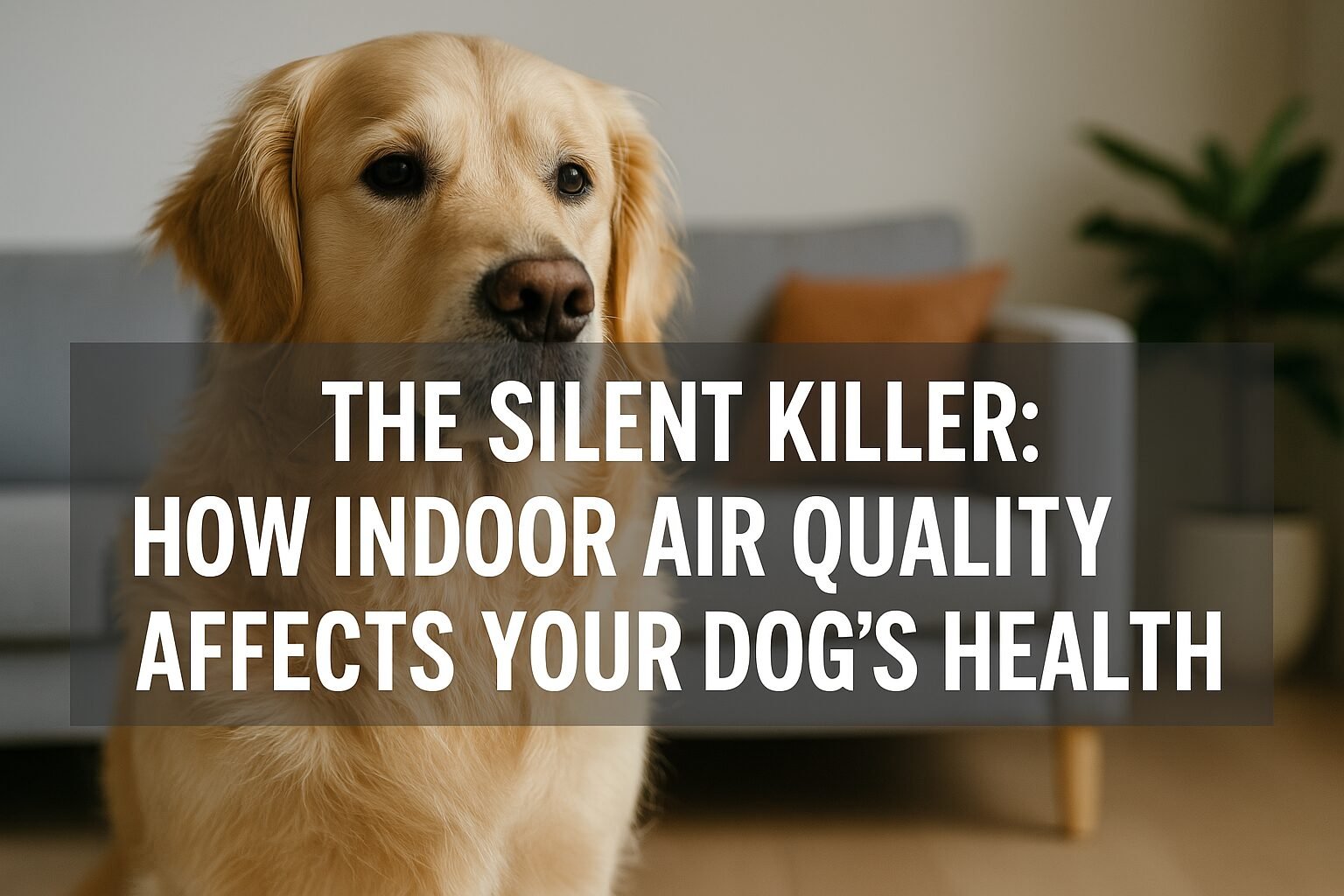
Understand The Topic
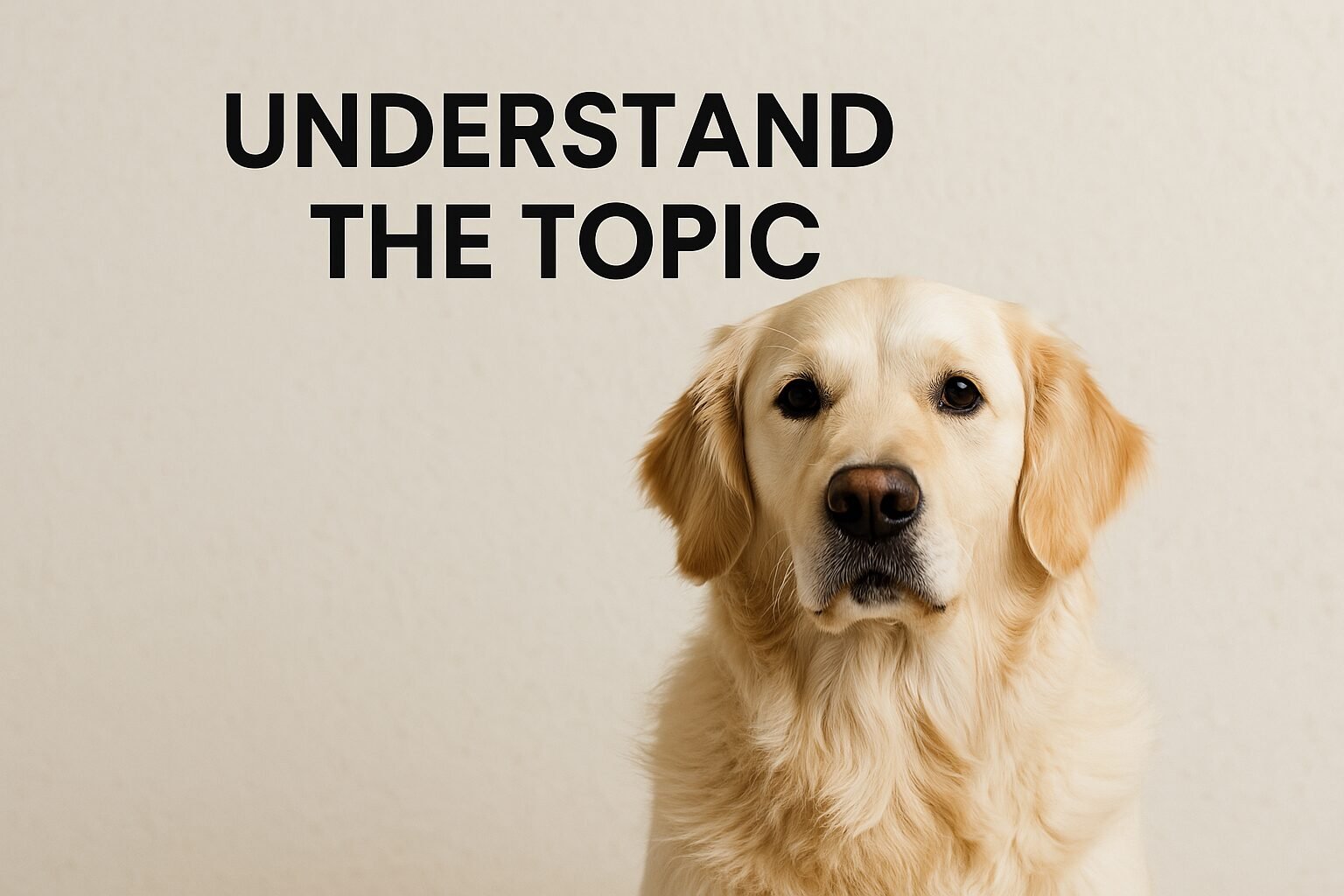
The Silent Killer: Many dog owners are unaware of the hidden dangers lurking in their homes—indoor air pollution. The quality of air inside your house can have a severe impact on your dog’s health, leading to respiratory issues, allergies, and even long-term diseases. Understanding these risks and taking preventive measures can ensure your furry companion lives a healthy life.
For more information regarding 4 seasonal cxcercieses of all dog breeds recommended by the doctors and experts,you can visit our youtube channel:
How Poor Indoor Air Quality Affects Dogs
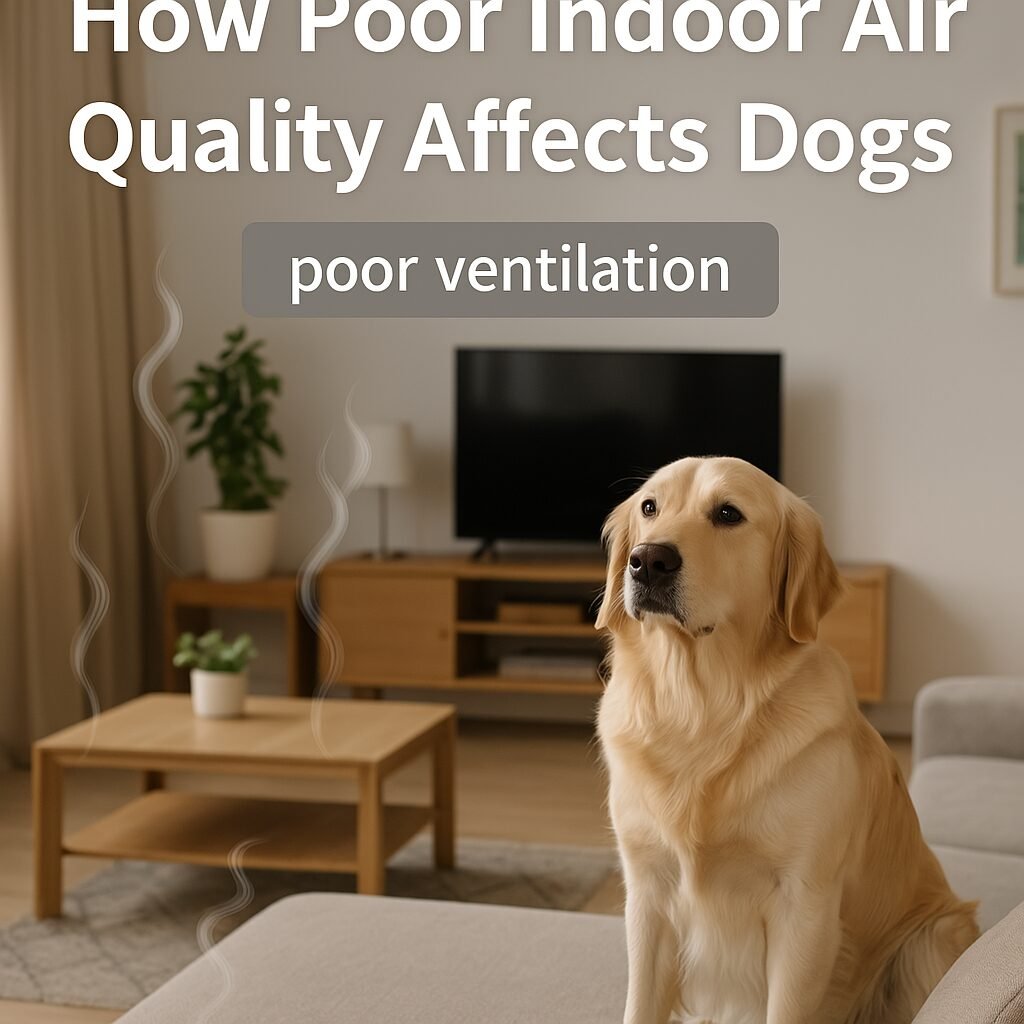
Even though we may not notice, harmful pollutants in the air can directly impact a dog’s respiratory system, skin, and overall well-being.
1. Respiratory Issues
Polluted indoor air can cause breathing difficulties, coughing, and chronic respiratory diseases in dogs.
2. Allergies and Skin Problems
Dust, mold, and pet dander can trigger allergies, leading to excessive scratching, redness, and irritation.
3. Increased Risk of Cancer
Long-term exposure to airborne toxins like tobacco smoke and chemical fumes may increase the risk of cancer in dogs.
4. Weakened Immune System
Toxins in the air can weaken your dog’s immune system, making them more susceptible to infections and illnesses.
How Air Quality Affects Different Dog Sizes
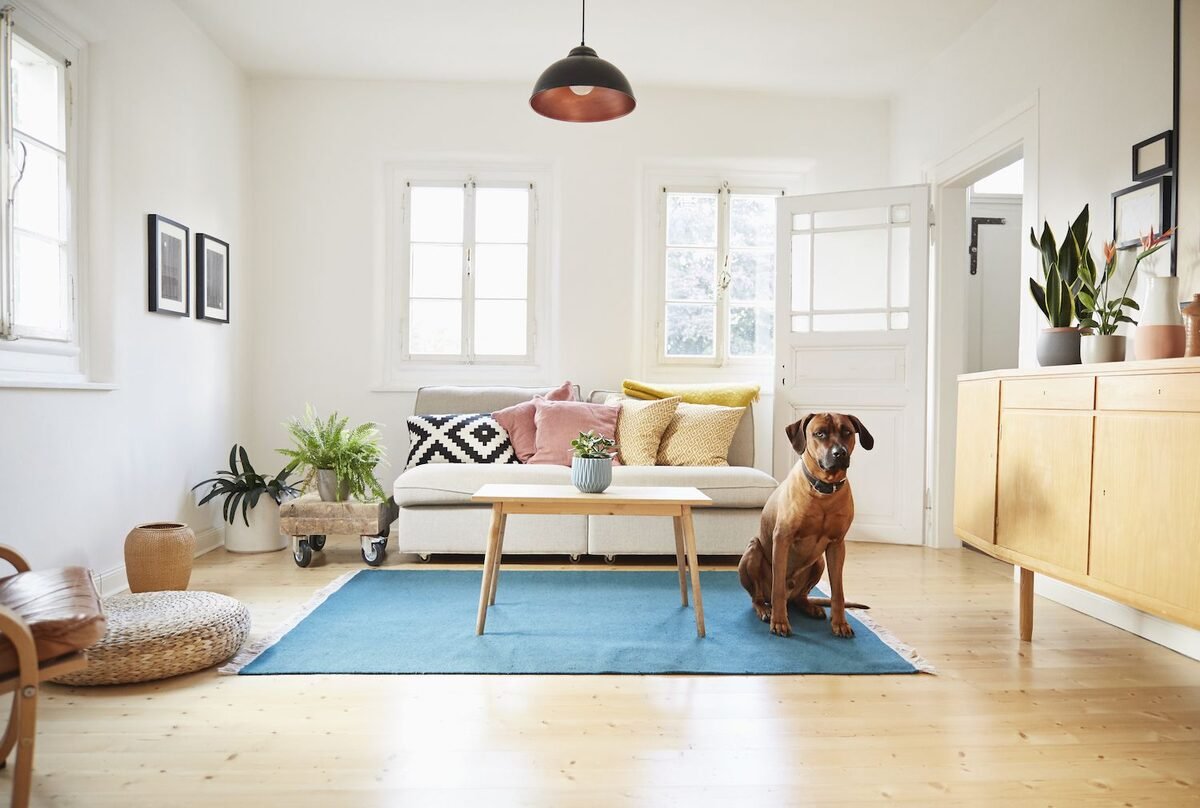
The impact of indoor air pollution varies depending on a dog’s size, age, and breed.
1. Puppies (80% More Susceptible)
Young dogs have underdeveloped immune systems, making them highly vulnerable to airborne pollutants.
2. Adult Dogs (50% Susceptible)
While stronger than puppies, adult dogs can still develop respiratory and allergic reactions over time.
3. Senior Dogs (70% Susceptible)
Older dogs have weaker lungs and immune systems, making them more prone to illnesses caused by poor air quality.
Indoor Air Pollutants That Harm Dogs
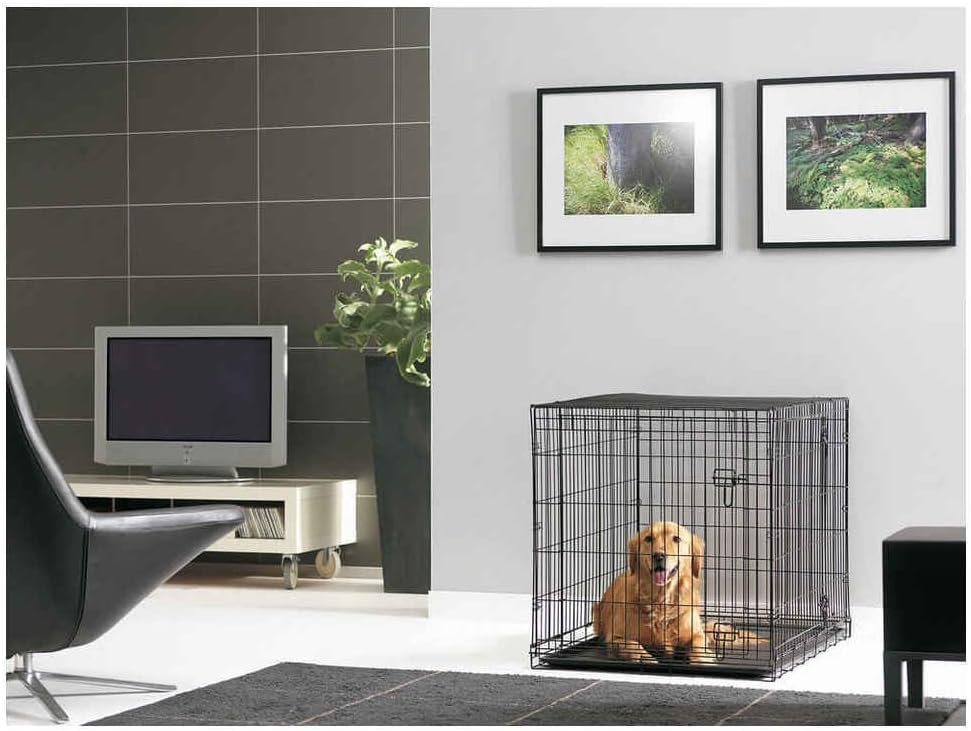
Identifying and eliminating harmful pollutants can significantly improve your dog’s health.
1. Tobacco Smoke
Second-hand smoke increases the risk of respiratory infections, allergies, and even cancer in dogs.
2. Household Cleaners
Many cleaning products release toxic fumes that dogs inhale, leading to respiratory distress.
3. Mold and Mildew
Fungal spores in damp areas can cause lung infections and allergic reactions in dogs.
4. Poor Ventilation
Stale air allows pollutants to accumulate, making it harder for dogs to breathe clean oxygen.
Solutions for Urban Dog Owners
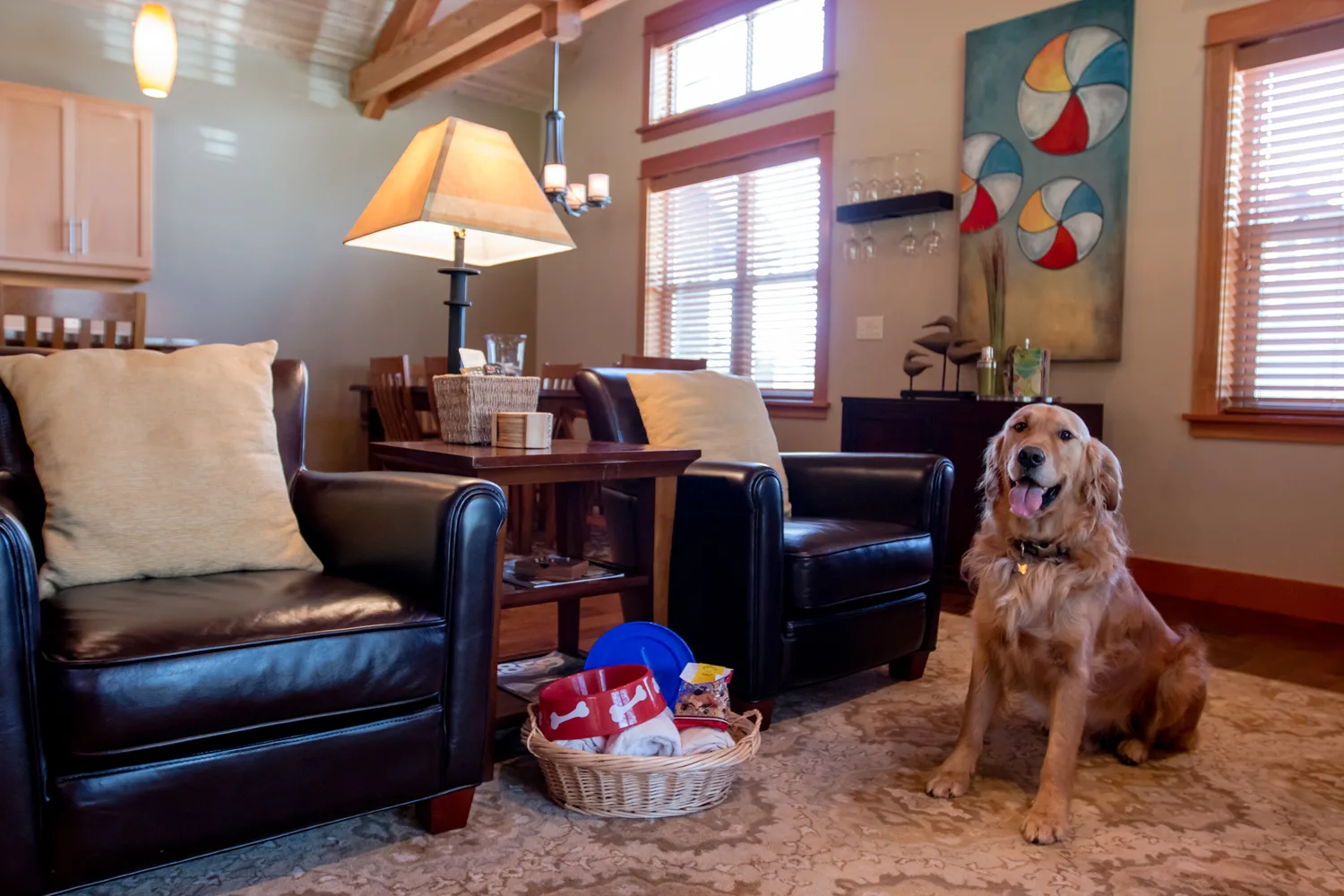
Living in an urban environment presents unique challenges, but there are effective ways to improve indoor air quality.
1. Invest in Air Purifiers
HEPA filters help remove pet dander, allergens, and airborne toxins from your home.
2. Regular Ventilation
Opening windows for at least 10 minutes daily allows fresh air circulation, reducing indoor pollution.
3. Use Natural Cleaning Products
Avoid harsh chemicals and opt for pet-safe, eco-friendly cleaning solutions.
4. Keep Your Home Dust-Free
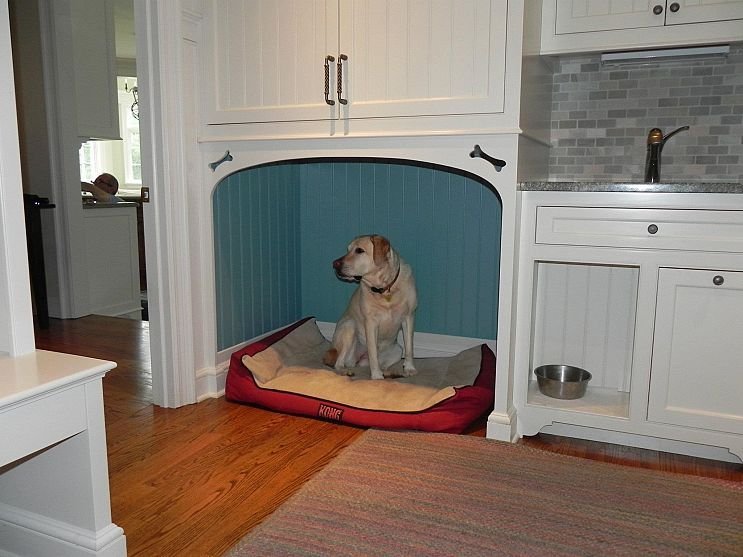
Regular vacuuming and dusting prevent allergens from accumulating in your living space.
5. No Smoking Indoors
Keeping smoke away from pets eliminates one of the most harmful indoor air pollutants.
Top Supplements for Strengthening Your Dog’s Immune System

| Dog Life Stage | Recommended Supplement | Top Brands |
|---|---|---|
| Puppies | Omega-3,
|
Zesty Paws, Nordic Naturals, Nutri-Vet |
| Adult Dogs | Multivitamins,
|
VetriScience, NaturVet, PetHonesty |
| Senior Dogs | Glucosamine,
|
Cosequin, Purina Pro Plan, Zesty Paws |
How to Use Supplements – DogsReader Expert Advice
| Dog Life Stage | Recommended Supplement | Dosage & Usage | Vet Recommendation |
|---|---|---|---|
| Puppies | Omega-3, Colostrum, Probiotics | Given daily with meals, follow weight-based dosing. | Dr. Emily Carter, DVM (Pet Wellness Clinic) recommends starting with a low dose and using liquid Omega-3 for easier digestion. |
| Adult Dogs | Multivitamins, Antioxidants, Echinacea | Administer daily or as needed, based on activity level. | Dr. Robert Hayes, DVM (Healthy Paws Vet Center) suggests using vet-approved supplements and monitoring for allergic reactions. |
| Senior Dogs | Glucosamine, Turmeric, Immune Boosters | Given daily, often mixed with food for better absorption. | Dr. Lisa Monroe, DVM (Senior Pet Care Clinic) advises combining with a balanced diet and regular vet check-ups for maximum benefits. |
Closing Statement
Your dog’s health is directly affected by the air they breathe. By making simple adjustments in your home, you can prevent serious health issues and provide your pet with a safer, cleaner environment. Take action today and ensure your furry friend thrives in a healthy indoor space!
Stay informed with DogsReader for more expert insights into your dog’s well-being! 🐶✨
FAQs
1. How do I know if my indoor air quality is bad for my dog?
If your dog is frequently sneezing, coughing, scratching, or showing signs of breathing difficulties, your indoor air quality may be poor. Other signs include excessive eye watering and skin irritation.
2. Can air purifiers really help my dog?
Yes! Air purifiers with HEPA filters effectively remove allergens, dust, and toxins from the air, making it safer for your dog to breathe.
3. Are scented candles or air fresheners harmful to dogs?
Many scented candles and air fresheners contain chemicals that can irritate a dog’s respiratory system. Opt for natural essential oil diffusers instead, but ensure the oils used are pet-safe.
4. How often should I clean my home to maintain good air quality for my dog?
Vacuuming and dusting at least twice a week, along with regular ventilation, can significantly improve indoor air quality. Washing your dog’s bedding and toys frequently also helps reduce allergens.
5. What is the best way to improve air quality in a small apartment with a dog?
Using an air purifier, ensuring proper ventilation, and keeping the apartment clean from dust and pet dander are the best ways to improve air quality. Regularly changing HVAC filters is also important.
6. Can poor air quality affect my dog’s mood?
Yes, poor air quality can lead to lethargy, irritability, and even increased anxiety in dogs due to difficulty breathing or discomfort.
7. What indoor plants can help improve air quality for my dog?
Pet-safe plants like spider plants, areca palms, and bamboo palms can naturally filter indoor air and improve oxygen levels.
8. Should I be concerned about cooking fumes affecting my dog?
Yes, cooking fumes, especially from burnt food or oil, can release harmful particles into the air. Using a range hood or opening windows while cooking helps reduce exposure.
9. How can I test my home’s air quality?
You can use an indoor air quality monitor to measure pollutant levels, humidity, and ventilation effectiveness. These devices help identify problem areas in your home.
10. What immediate steps can I take to protect my dog from indoor air pollution?
Stop smoking indoors, switch to pet-safe cleaning products, improve ventilation, and use an air purifier to quickly reduce indoor pollutants.
Large Breeds
Dog Grooming Mistakes: and How to Avoid Them
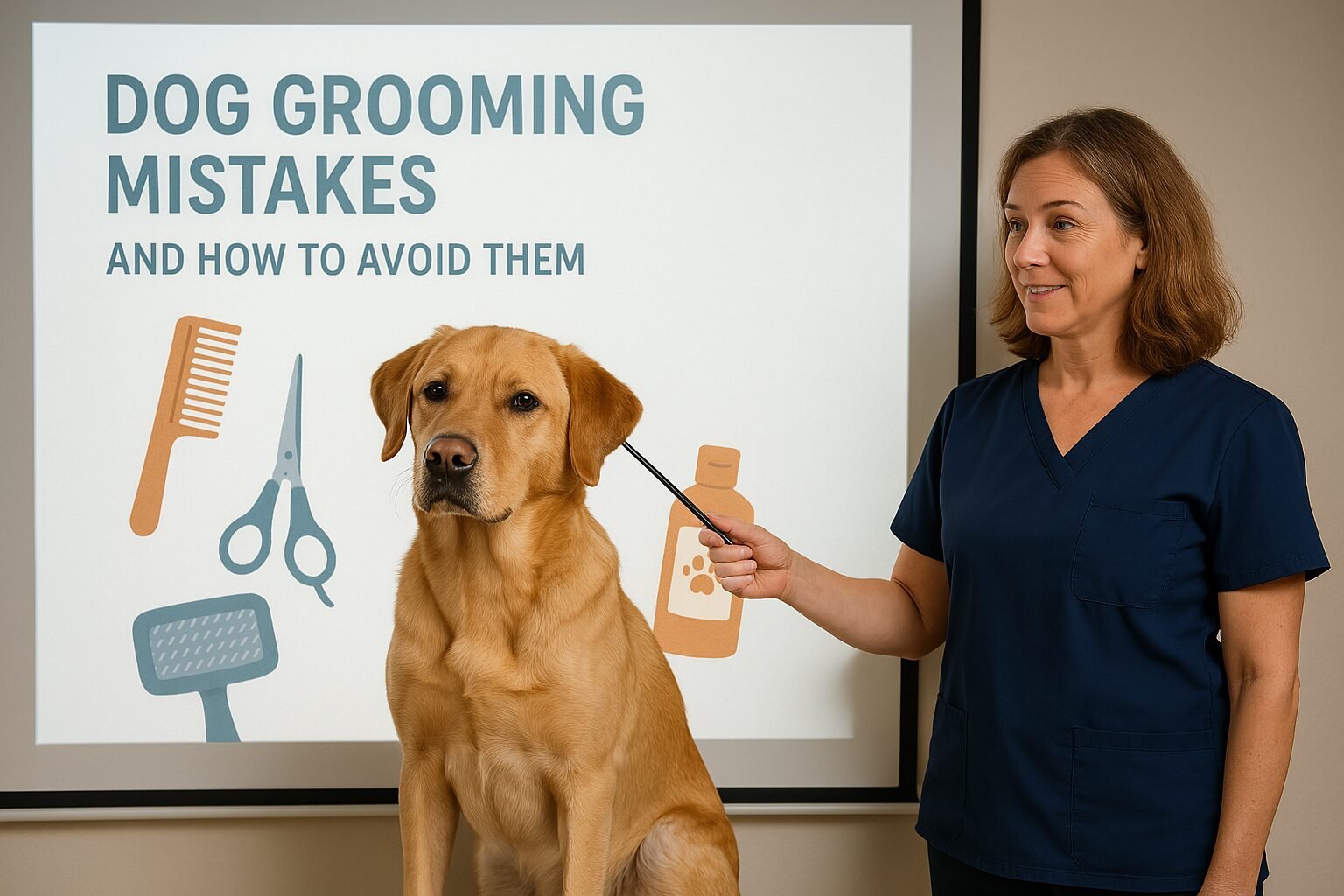
10 Common Mistakes
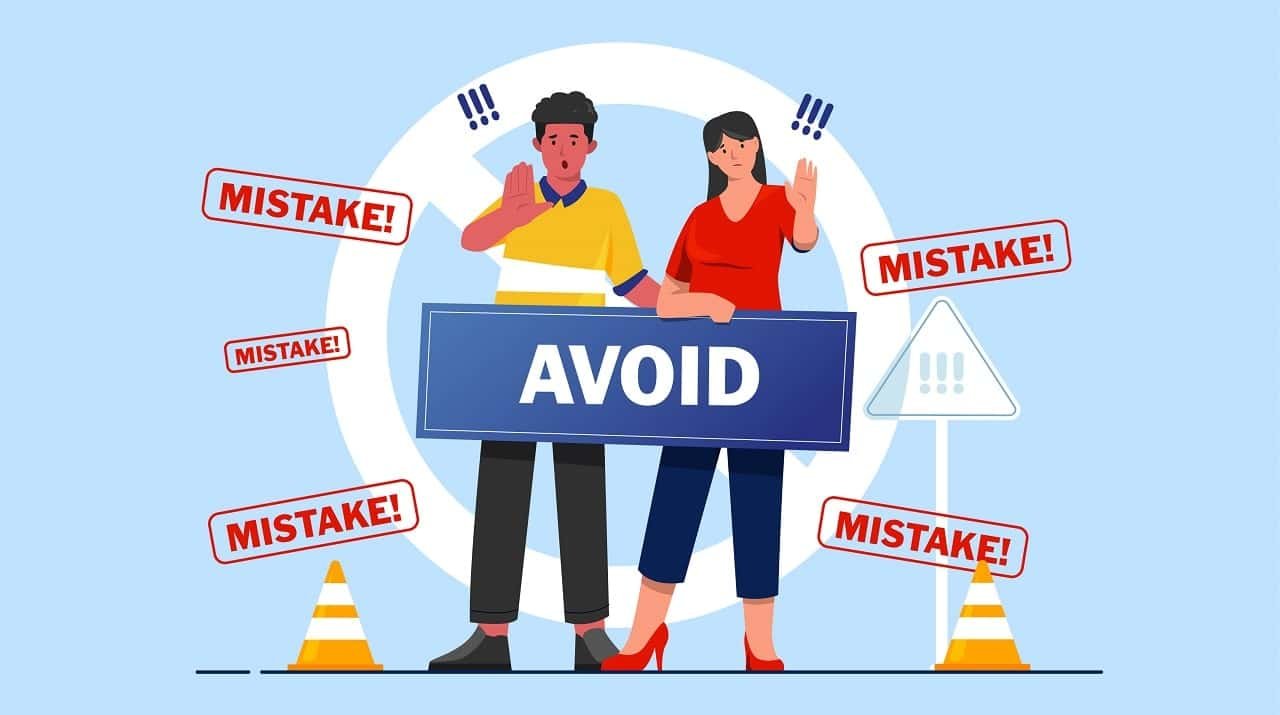
Dog Grooming Mistakes: Grooming is an essential part of dog care, ensuring their health, hygiene, and overall well-being. However, many dog owners unknowingly make mistakes that can lead to discomfort, infections, or even long-term health issues. In this guide, we’ll highlight 10 common dog grooming mistakes and provide expert tips to help you groom your pup like a pro!
For more information regarding 4 seasonal cxcercieses of all dog breeds recommended by the doctors and experts,you can visit our youtube channel:
1. Skipping Regular Brushing

Mistake: Many owners assume that brushing is only necessary for long-haired breeds, but all dogs benefit from regular brushing. Skipping it can lead to matting, excessive shedding, and skin issues.
How to Avoid: Brush your dog at least twice a week (daily for long-haired breeds). Use breed-appropriate brushes, such as a slicker brush for thick coats and a rubber brush for short-haired dogs.
Pros & Cons of Brushing
| Pros | Cons |
|---|---|
| Prevents matting and shedding | Requires time and consistency |
| Improves circulation and skin health | Some dogs may resist brushing initially |
| Strengthens bond with your dog | Needs the right tools for different coat types |
2. Bathing Too Frequently or Not Enough

Mistake: Overbathing can strip essential oils from your dog’s coat, leading to dry, itchy skin, while infrequent bathing can cause odor and skin infections.
How to Avoid: Follow a breed-specific bathing schedule—typically once every 4–6 weeks. Use dog-safe, pH-balanced shampoos to maintain a healthy coat.
Pros & Cons of Bathing
| Pros | Cons |
| Removes dirt and odors | Overbathing can cause dry skin |
| Keeps skin healthy and hydrated | Some dogs dislike water and bathing |
| Prevents skin infections | Requires proper drying to prevent fungus growth |
3. Ignoring Ear Cleaning
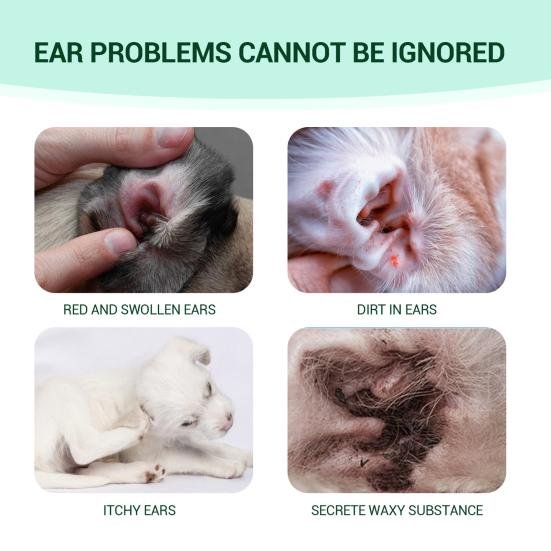
Mistake: Neglecting ear care can result in infections, especially in floppy-eared breeds like Cocker Spaniels and Basset Hounds.
How to Avoid: Clean your dog’s ears once a week with a vet-approved ear cleaner. Avoid using cotton swabs inside the ear canal, as they can push debris deeper.
Pros & Cons of Ear Cleaning
| Pros | Cons |
| Prevents infections and wax buildup | Some dogs dislike ear handling |
| Reduces bad odors | Requires the right cleaning solution |
| Helps detect ear mites early | Overcleaning can irritate the ears |
4. Cutting Nails Too Short or Ignoring Them

Pros & Cons of Nail Trimming
| Pros | Cons |
| Prevents joint problems and discomfort | Risk of cutting too short and causing bleeding |
| Reduces scratches on furniture and floors | Some dogs resist nail trimming |
| Improves walking posture | Requires proper technique and tools |
Mistake: Long nails can cause discomfort, affect walking posture, and lead to joint issues. Cutting too short can lead to painful bleeding.
How to Avoid: Trim nails every 2–4 weeks, using a dog nail clipper or grinder. If you’re unsure, visit a groomer or vet for guidance.
5. Using Human Shampoo on Dogs

Mistake: Human shampoos contain harsh chemicals that can disrupt a dog’s skin pH balance, leading to irritation.
How to Avoid: Always use a vet-recommended dog shampoo to maintain coat health and avoid allergies.
6. Shaving Double-Coated Breeds
Mistake: Many owners shave dogs like Huskies or Golden Retrievers in summer, thinking it helps them cool down. In reality, this damages their natural coat, leading to overheating and sunburn.
How to Avoid: Instead of shaving, opt for regular deshedding sessions with an undercoat rake to keep their coat breathable.
7. Using the Wrong Grooming Tools

Mistake: Using the wrong brushes, clippers, or combs can make grooming ineffective and uncomfortable for your dog.
How to Avoid: Invest in high-quality grooming tools suited for your dog’s coat type. Consult a professional groomer for recommendations.
Essential Grooming Tools for Your Dog
How to Use Grooming Tools – Expert Guide by DogsReader

| Tool Type | Best Usage Guide |
| Slicker Brush | Brush in the direction of hair growth, using gentle strokes to detangle without pulling. |
| Rubber Brush | Use in circular motions to loosen dirt and hair, great for short-haired breeds. |
| Undercoat Rake | Use with light pressure on double-coated breeds to remove loose undercoat without damaging the topcoat. |
| Nail Clippers/Grinder | Clip small sections at a time, avoiding the quick; grinders help smooth rough edges. |
| Dog-Safe Shampoo | Wet coat thoroughly, lather with a small amount, and rinse completely to prevent residue buildup. |
| Vet-Approved Ear Cleaner | Apply cleaner to a cotton pad and gently wipe the ear flap and outer canal, avoiding deep insertion. |
8. Not Checking for Parasites
Mistake: Fleas, ticks, and mites often go unnoticed, leading to infestations and skin infections.
How to Avoid: Regularly check your dog’s ears, belly, and between the paws for signs of parasites. Use vet-approved flea & tick preventatives year-round.
9. Ignoring Dental Hygiene
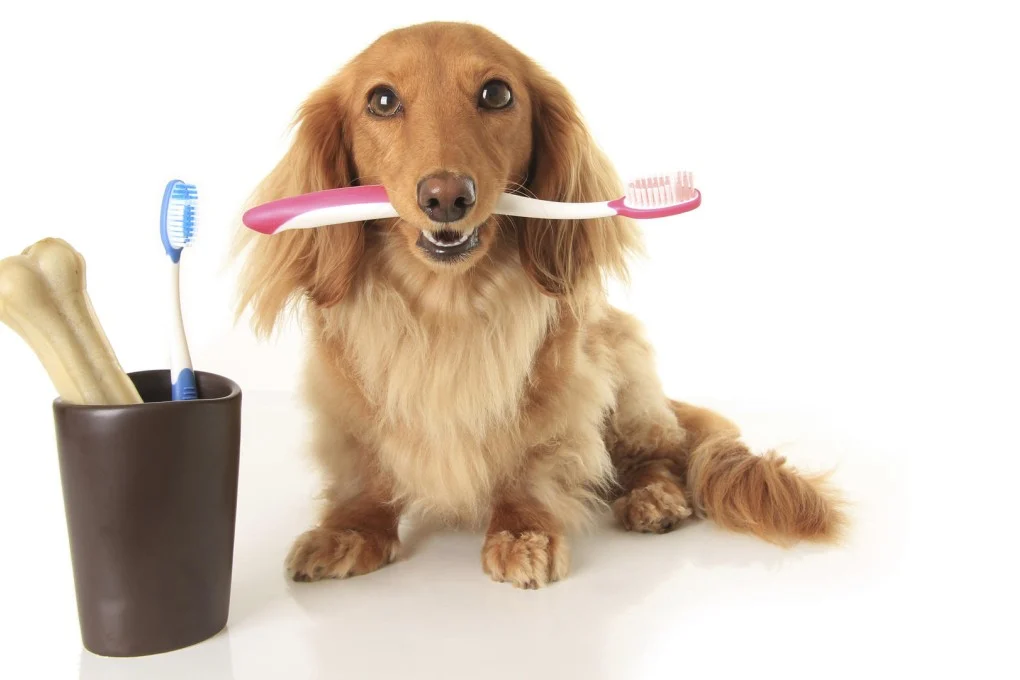
Mistake: Many owners overlook dental care, leading to tartar buildup, gum disease, and bad breath.
How to Avoid: Brush your dog’s teeth at least 3 times a week using a (dog-safe toothbrush) – and – ( toothpaste. ) Dental chews and vet-approved oral rinses also help.
10. Rushing Through Grooming Sessions

Mistake: Grooming in a hurry can make your dog anxious and increase the risk of injury.
How to Avoid: Make grooming a positive experience by staying calm, using treats, and gradually introducing new tools and techniques.
Closing Statement
Avoiding these common grooming mistakes will ensure your dog stays healthy, comfortable, and happy. Grooming is not just about looksit’s about maintaining their well-being!
Frequently Asked Questions (FAQs)
1. How often should I groom my dog?
It depends on the breed and coat type. Most dogs need brushing twice a week, baths every 4–6 weeks, and nail trims every 2–4 weeks.
2. Can I use human shampoo on my dog?
No. Human shampoos can disrupt a dog’s skin pH balance. Always use a dog-specific, pH-balanced shampoo.
3. What is the best way to clean my dog’s ears?
Use a vet-approved ear cleaner and a cotton pad to gently wipe the outer ear. Avoid inserting anything deep into the ear canal.
4. How can I prevent my dog’s nails from getting too long?
Trim them regularly, about every 2–4 weeks, or use a grinder for smoother edges. Walking on rough surfaces can also help naturally wear them down.
5. What should I do if my dog hates grooming?
Make grooming a positive experience by using treats, taking it slow, and starting with short sessions. Gradually introduce grooming tools.
6. How do I know if my dog has a skin infection?
Signs include redness, itching, hair loss, bad odor, or excessive licking. If you notice any of these, consult your vet immediately.
-

 SMALL DOG BREEDS4 months ago
SMALL DOG BREEDS4 months agoMerle Chihuahua: A Comprehensive Guide
-

 SMALL DOG BREEDS4 months ago
SMALL DOG BREEDS4 months agoMaltese: A Beloved Companion
-

 SMALL DOG BREEDS4 months ago
SMALL DOG BREEDS4 months agoMerle Pomeranian: A Adorable Companion
-

 Large Breeds4 months ago
Large Breeds4 months agoStandard Poodle Weight: Country Wise
-

 SMALL DOG BREEDS4 months ago
SMALL DOG BREEDS4 months agoYorkshire Terrier: a Big Personality
-

 MEDIUM BREEDS4 months ago
MEDIUM BREEDS4 months agoAmerican Water Spaniel Colors Chocolate In Crcols:
-

 Terrier Breeds3 months ago
Terrier Breeds3 months agoDog Breeds: by Country & Category
-

 Experts Nutritions3 months ago
Experts Nutritions3 months agoBest Dog Food: Large Breeds






